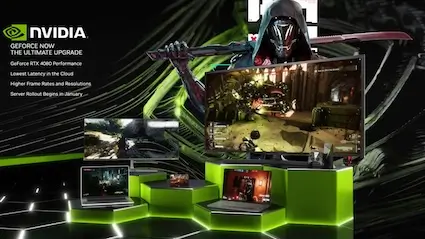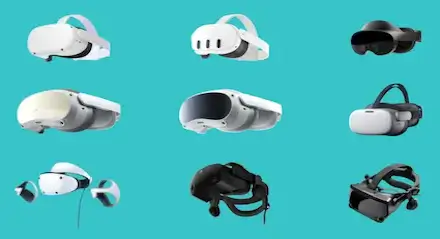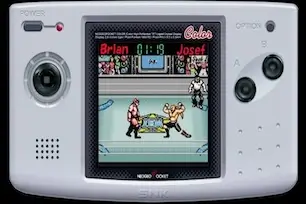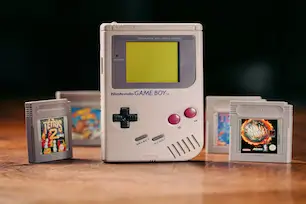The landscape of gaming has transformed significantly in recent years. The rise of portable video games, especially with the Nintendo Switch, has changed how we play. Gaming is no longer limited to a traditional setup. Now, you can enjoy it wherever you are.
Also, the growth of mobile gaming has led to a big increase in casual gaming. Now, players can enjoy simple games on their smartphones. Now, powerful and affordable laptops, plus cloud gaming options, let PC gamers enjoy AAA games not just at home but also on the go.
In this guide, we’ll explore how casual gaming, portable video games, and mobile gaming are reshaping the way players connect with games—whether on a commute, in a park, or from the comfort of home.
The Table of Contents
Key Takeaways for Casual & Mobile Gamers
✅ Gaming isn’t just for couches anymore. Thanks to portable consoles and mobile games, you can squeeze in a session pretty much anywhere—on the train, at the park, or in line for coffee.
✅ Cloud gaming and VR are leveling up casual play. Services like Stadia and devices like Meta Quest bring big-budget games to your phone or headset—no fancy setup required.
✅ Game devs are thinking outside the living room. Today’s games are built to fit your lifestyle, whether you’ve got 5 minutes on your phone or a full evening at home.
How Casual Gaming & Portable Video Games Are Redefining Play Spaces
As portable video games and mobile gaming grow quickly, players are more aware of how their surroundings affect their gaming experiences.
The gaming environment is more than just a background. It plays a key role in how players interact and stay engaged. This awareness also includes casual gaming. Players want experiences that fit into their everyday lives.
interact and stay engaged. This awareness also includes casual gaming. Players want experiences that fit into their everyday lives.
Game developers are keenly aware of this shift. Recently, several companies have introduced immersive technologies that go beyond conventional gaming setups.
For instance, advancements in augmented reality (AR) and virtual reality (VR) have redefined how portable video games are experienced in various spaces.
- Companies like Meta (formerly Facebook) have been pushing boundaries with their Oculus VR headsets are designed to create immersive environments that effectively merge the physical and digital realms, meeting the expectations of today’s gamers.
- Cloud gaming platforms, such as NVIDIA GeForce NOW and Google Stadia, let gamers play high-quality games on any device and from any location. This makes mobile gaming more flexible and convenient.
- As IGN noted in their Google Stadia review, “Stadia works shockingly well as a way to play major games on a phone, tablet, or lower-end laptop, as long as you have a solid internet connection.
- Gaming is becoming more connected to social events. This includes things like community esports tournaments and interactive gaming setups in public places, which are gaining popularity.
These changes show a significant shift in how we view and enjoy games. They emphasize making interactions livelier and engaging for players, whether they are at home or on the go.
Portable Video Games and Mobile Gaming in Public Spaces
Gaming is changing. It is no longer just seen as a hobby for teenage boys sitting in basements. Now, more creative mobile games are appearing in public spaces. Recent advancements in augmented reality (AR) have enabled developers to create immersive experiences that blend gaming with the real world.
For example, popular games like Pokémon GO have turned city parks and streets into lively places. Players search for Pokémon, which helps them interact socially and stay active.
places. Players search for Pokémon, which helps them interact socially and stay active.
These experiences show how portable video games can build community and encourage active living.
- In addition, significant gaming events, including community esports tournaments and engaging interactive gaming setups, are progressively taking place in public venues.
- These events allow gamers to gather, compete, and share their experiences in fun and collaborative settings.
- For example, the rise of live-streamed events and tournaments on platforms like Twitch shows how much people are getting involved with gaming. This has become an important part of our culture.
- This trend shows that gaming is becoming more accepted in everyday life. It also highlights how public spaces can be redesigned to offer enjoyable casual gaming experiences.
Developers are recognizing this opportunity. They are creating community spaces designed for gaming. These areas encourage players to interact and work together.
Game Design Innovations for Mobile Devices & Portable Consoles
The evolution of public gaming experiences represents just one avenue for innovation in game design. Developers are also exploring interconnected gameplay, where progress and features can carry over across devices or game worlds, creating a seamless experience no matter where you play. Today, it's important to understand different gaming environments. Players enjoy games in many places, like small apartments or public spaces.
Recent advancements in technology, such as augmented reality (AR) and virtual reality (VR), have transformed how players interact with their gaming environments. These innovations allow gamers to immerse themselves in expansive virtual worlds while utilizing their physical spaces efficiently.
For example, Meta's Quest VR platform has changed home gaming. It offers immersive experiences in small spaces, which makes it easy to use even in crowded urban areas.
experiences in small spaces, which makes it easy to use even in crowded urban areas.
More portable video games and mobile gaming are making people want quick and fun gameplay they can enjoy anywhere, anytime.
- Developers are now making games that address the different challenges of playing in various places.
- They focus on user-friendly controls that work well during public transit commutes. They also create soundtracks that improve the experience for players who don’t use headphones.
- As gaming grows, the focus is changing to make smooth transitions between different gaming situations. This applies whether players are at home or on the go. The goal is to let players enjoy immersive gaming experiences wherever they are.
Why Gaming Spaces Matter in the Era of Mobile & Casual Play
As game developers adjust to the changing gaming world, they pay attention to where games are played. This helps them improve gameplay in various settings.
For mobile devices, we need to tackle the issues of commuting on public transit. This means making controls that are simple to use and creating soundtracks that enhance the experience for players in public.
- A good example is the mobile game Among Us. This multiplayer game allows players to work together on a spaceship while trying to discover who among them is the imposter sabotaging their mission.
- It’s simple mechanics and short gameplay sessions make it ideal for quick gaming on the go.
Understanding gaming spaces means recognizing how people interact in public gaming events. Developers can improve gameplay by thinking about how different environments impact it. This method makes games more fun and exciting for players. It helps them feel more connected to the games in various environments.
Choosing the Right Gaming Space – Home, Mobile, or On-the-Go
As the gaming landscape evolves, the environments in which we play significantly influence our gaming choices. The rise of portable game systems and mobile gaming shows that people prefer simple and convenient gaming choices that fit into their daily routines.
simple and convenient gaming choices that fit into their daily routines.
- Players may prefer quick mobile games during their busy schedules or immersive console games that invite deeper engagement.
- This changing situation shows that today's gaming experiences are varied. There is a rising need for games that are easy to play as well as those that offer deeper gameplay.
- The fluctuation in player preferences influences market trends, prompting developers to tailor their creations to meet the various needs of their audiences.
The Future of Casual Gaming & Portable Play
Portability and social interaction in gaming are important because they provide meaningful experiences for players. These experiences help players connect with each other. Gamers are excited about the future.
They expect new consoles, like the Nintendo Switch OLED model and the Xbox Series X/S, will add features to improve the gaming experience at home.
add features to improve the gaming experience at home.
These advancements include:
- Better graphics, quicker loading times due to advanced SSD technology, and new control features like adaptive triggers and haptic feedback on controllers.
- Ultimately, understanding the diverse spaces in which we play will enrich individual gaming experiences and strengthen the gaming community.
- As players think about how their gaming spaces affect their choices, their feedback will be very important for developers working on new games.
Quick FAQs About Portable Gaming Trends
What is casual gaming?
- Casual gaming refers to games designed to be easy to pick up and play.
- These games usually have simple controls, short sessions, and minimal time commitment—making them perfect for mobile devices or portable consoles.
What are portable video games?
- Portable video games are titles played on handheld consoles like the Nintendo Switch, Steam Deck, or retro systems like the Original Game Boy.
- These games let you enjoy full gaming experiences away from traditional setups.
How is mobile gaming different from console gaming?
- Mobile gaming typically happens on smartphones or tablets and focuses on accessibility, shorter sessions, and touchscreen controls. Console gaming, while often more immersive, generally requires a fixed setup—though hybrid systems like the Nintendo Switch blur those lines.
Can I play AAA games on portable devices?
- Yes. Thanks to cloud gaming platforms like NVIDIA GeForce NOW and portable PCs like the Steam Deck, you can now enjoy blockbuster AAA titles on the go.
How are public spaces becoming part of the gaming experience?
- With the rise of AR mobile games like Pokémon GO and pop-up esports events, public areas are now gaming hotspots. Developers are designing more experiences that merge real-world spaces with interactive gameplay.
Sell Your Vintage Video Games Online – The Old School Game Vault
If you're a gamer looking for where to sell vintage video games, look no further than The Old School Game Vault! We focus on buying old video games online, all while making it easy for you to turn your vintage collection into cash. If you have classic Nintendo NES cartridges or old N64 games, we buy it all here on our website.
The Old School Game Vault is an easy-to-use website and offers the highest trade-in prices around. It is a great place to sell old video games, so don't let your retro games gather dust—give them a new life and earn money by selling them today!








